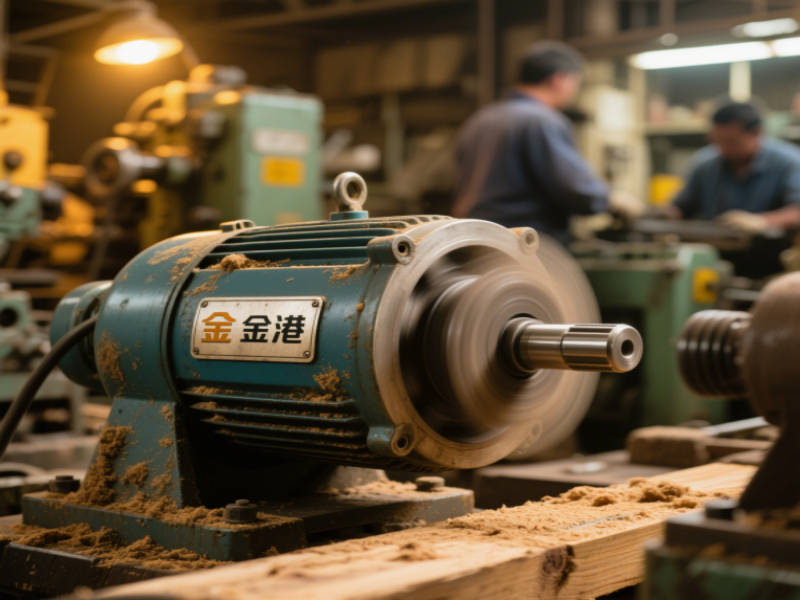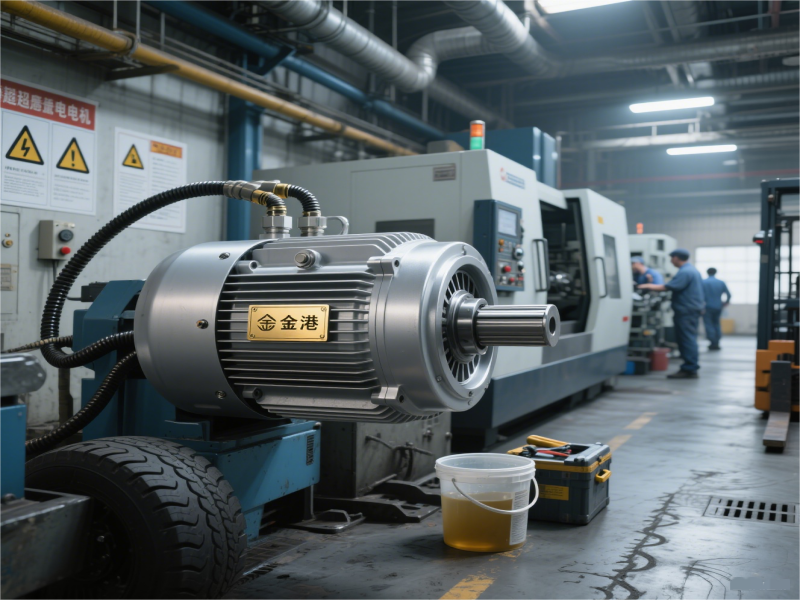Application of three-phase asynchronous motor in woodworking motor
Three-phase asynchronous motors are widely used in woodworking machinery. They are simple in structure, low in cost, and easy to maintain. They can meet the needs of woodworking equipment for high torque, dust resistance, and reliable operation. The following is a detailed description of the application scenarios, technical requirements, design optimization, and cases:
1.Application scenarios and industry requirements
The core requirements of woodworking machinery for motors include: high starting torque, dust erosion resistance, and adaptability to frequent start and stop. They are mainly used in:
- Sawing equipment: circular saws, band saws, CNC panel saws, etc., used for wood cutting, need to start quickly and withstand impact loads.
- Planing and milling equipment: flat planers, pressure planers, woodworking milling machines (such as mortise and tenon machines), which require stable torque to handle wood surface processing.
- Sanding equipment: wide belt sanders and disc sanders require the motor to run at a constant speed to avoid affecting the sanding accuracy due to speed fluctuations.
- Drilling and engraving equipment: multi-axis drilling machines, CNC woodworking engraving machines, which need to take into account both speed accuracy and load adaptability.
- Auxiliary equipment: wood chip vacuum cleaners, conveyor belt motors, which need to be dust-resistant and operate continuously for a long time.
2.Technical requirements of three-phase asynchronous motors in woodworking scenarios
Protection and dustproof design
- Protection level: usually needs to reach IP54 (dust intrusion + water spray), and some high dust environments (such as sanding workshops) need IP55 to prevent wood chips from accumulating and affecting motor performance.
- Dustproof structure:
- The housing adopts a closed design, and the vents are equipped with metal filters or dustproof nets to prevent large particles of wood chips from entering.
- The junction box is sealed and waterproof to prevent dust and humid air from invading and causing short circuits.
Mechanical performance and torque requirements
- High starting torque: When the saw machine starts, it needs to overcome the resistance of wood. The motor starting torque multiple (Tst/Tn) is usually ≥2.0, and a deep groove rotor or double cage rotor design is adopted.
- Overload capacity: Uneven wood material in woodworking processing can easily lead to sudden load changes. The motor needs to have an overload capacity of 1.5 times the rated load, and the insulation level is mostly F or H.
Heat dissipation and cooling system
- Equipment that runs continuously (such as sanding machines) needs to strengthen heat dissipation:
- Adopt a fully enclosed air cooling (TEFC) structure, and use an external fan to force heat dissipation to prevent dust from clogging the heat sink.
- High-power motors (≥15kW) can choose water cooling or oil cooling systems to prevent overheating during long-term high-load operation.

3.Targeted design optimization
Material and structural improvement
Shell material:
- Cast iron shell is mainly used, which is impact-resistant and has good heat dissipation. The surface is treated with rust prevention (such as spraying weather-resistant paint) to reduce dust adhesion.
- Lightweight equipment (such as small engraving machines) can use aluminum alloy shells to balance strength and heat dissipation.
Bearing protection:
- Use sealed deep groove ball bearings or cylindrical roller bearings, filled with high-temperature resistant and dust-resistant lithium-based grease (such as NLGI grade 2) to extend the maintenance cycle.
- High-load equipment (such as large sawing machines) uses heavy-load bearings and is equipped with bearing temperature monitoring sensors.
Variable frequency speed adaptation
Woodworking processes often require speed regulation (such as sawing wood of different thicknesses and sanding different materials). When using three-phase asynchronous motors with frequency converters, optimization is required:
- Insulation reinforcement: Use corona-resistant enameled wire to prevent high-frequency voltage from causing winding breakdown.
- Harmonic suppression: Optimize rotor design to reduce harmonic losses during variable frequency operation and improve efficiency.
Safety and protection functions
- Built-in thermistor or PTC sensor to monitor winding temperature and automatically cut off power when overloaded.
- Add a blockage alarm device in dusty environments to trigger an alarm when the vent is blocked by wood chips.
4.Typical application cases
| Device Type | Motor power | Core Requirements | Technical features |
| Large circular saw machine | 15-55kW | High starting torque, shock load resistance | Double cage rotor, IP55 protection, cast iron housing, with hydraulic tensioning device to reduce starting vibration. |
| Wide belt sander | 7.5-30kW | Constant speed operation, low vibration | Frequency conversion speed regulation (5-50Hz), F-class insulation, rotor dynamic balancing accuracy G6.3, ensuring the smoothness of the sanded surface. |
| CNC woodworking engraving machine | 2.2-7.5kW | Speed accuracy, response speed | Vector controlled inverter drive, low inertia rotor design, positioning accuracy ±0.1mm, suitable for complex pattern engraving. |
| Industrial wood dust vacuum cleaner | 11-30kW | High air volume, dust and wear resistance | Special motor for multi-blade centrifugal fan, the impeller is dynamically balanced, the shell is equipped with wear-resistant coating, and the protection level is IP54. |
| Woodworking Lathe | 5.5-15kW | Constant power speed regulation (low speed high torque + high speed constant power) | The variable frequency motor is combined with an electromagnetic speed control clutch to achieve stepless speed regulation from 0 to 3000rpm, adapting to the processing of workpieces with different diameters. |
5.Summary
The application of three-phase asynchronous motors in woodworking machinery is adapted to multiple scenarios such as sawing, planing, and sanding through dustproof design, torque optimization, and heat dissipation enhancement. From small and medium-sized engraving machines to large production line equipment, its reliability and economy make it the mainstream choice in the woodworking industry. In the future, with the development of intelligent woodworking machinery, efficient and energy-saving three-phase asynchronous motors (such as IE4 ultra-high efficiency motors) combined with digital frequency conversion technology will further improve processing accuracy and energy utilization.




